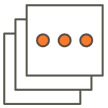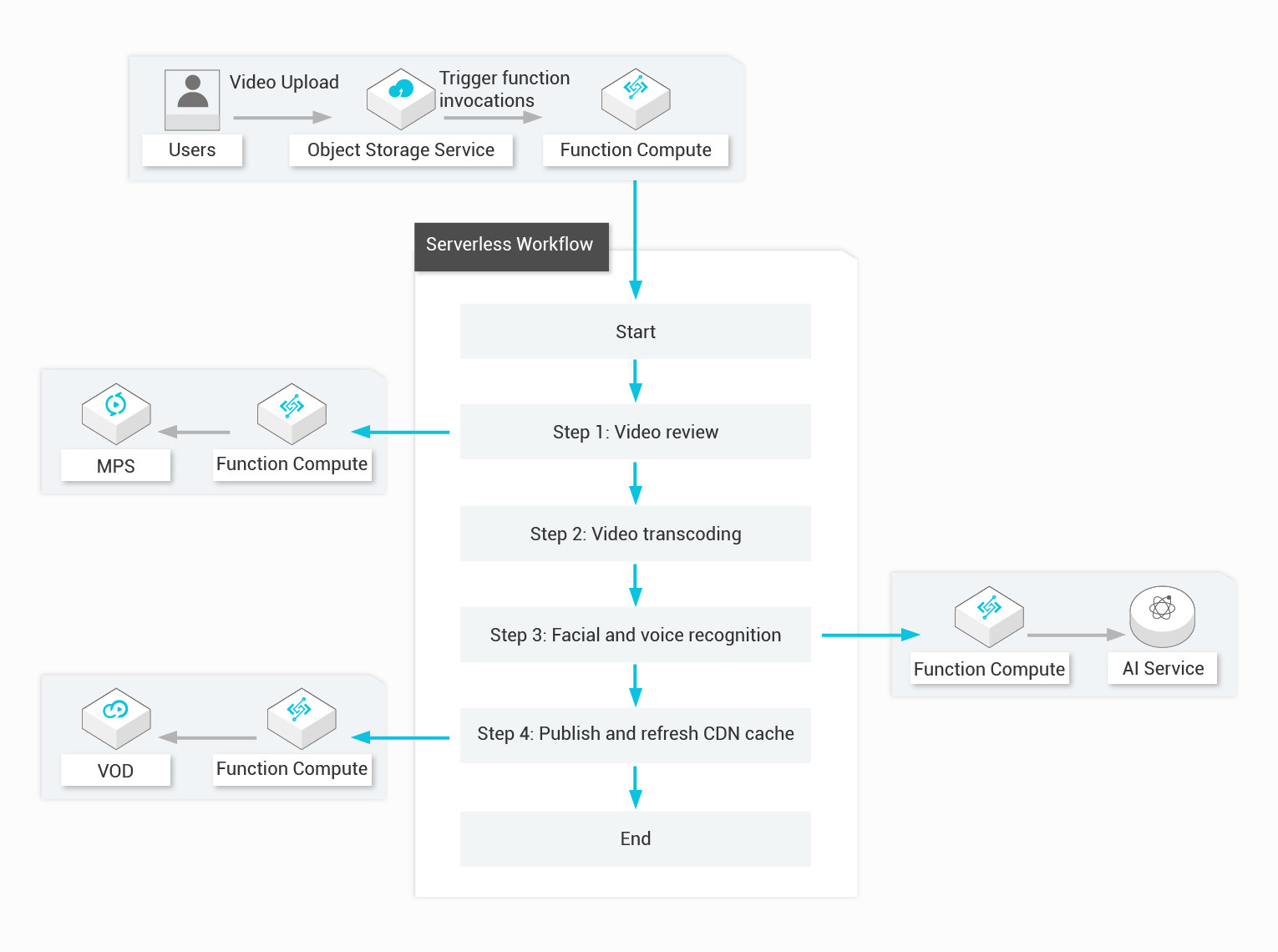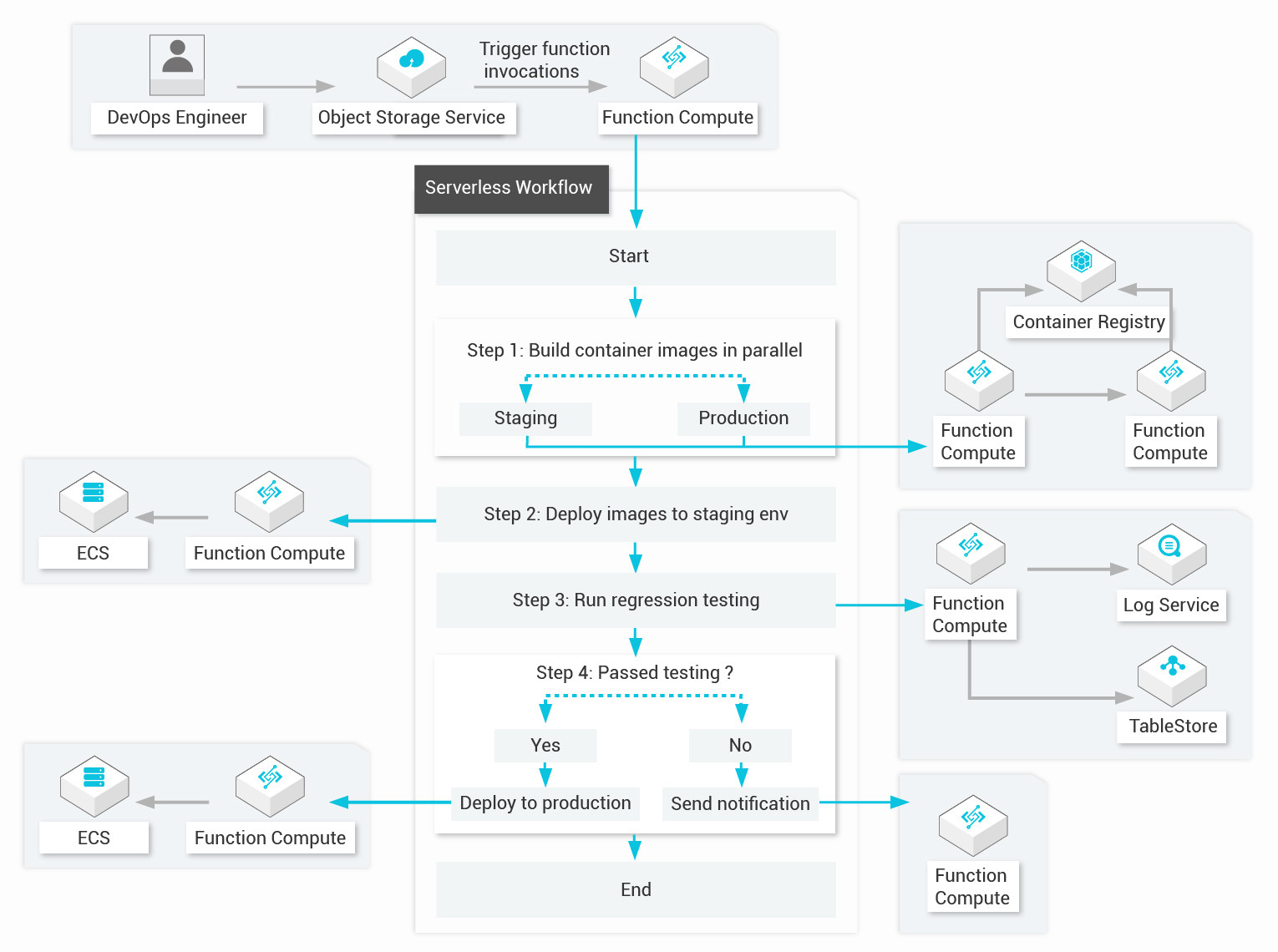Simplify Multi-Step, Long-Running, Stateful Application Orchestration
CloudFlow is a fully managed serverless cloud service used to coordinate the execution of multiple distributed tasks. It is committed to simplifying tedious tasks, such as task coordination, state management, and error handling required to develop and run business processes. It enables you to focus on business logic development.
You can arrange distributed tasks in sequence, branch, and parallel. The service will reliably coordinate task execution according to the set sequence and track the state transition of each task. Then, it will execute custom retry logic (whenever necessary) to ensure the smooth completion of the workflow.
The Distributed Component
Orchestrate applications written in different infrastructures, networks, and languages, and eliminate the transition from a hybrid cloud and proprietary cloud to a public cloud or evolve from a single architecture to a microservice architecture.
Reduce the Amount of Code
It helps you manage the logic of your application and supports multiple control primitives, such as sequence, branch, and parallel, to minimize repeated orchestration code in your business.
Improve Fault Tolerance
Manage process status, set checkpoints, and process reboots to ensure that your applications are performing step-by-step as expected. Built-in try/catch, retry, and rollback functions can automatically handle exception errors.
Features
Operation & Maintenance Fully-Managed and Pay-As-You-Go
Frees operation and maintenance personnel from infrastructure maintenance and provides secure, highly available, highly fault-tolerant, and highly durable services. You only need to pay the step conversion fee; no use means no additional fees!
Service Orchestration Capabilities
It helps you separate process logic from task execution, supports multiple control primitives, such as sequence, branch, and parallel. It also has built-in error retry and capture capabilities, saving time for writing orchestration code.
Support Long Running Process
Track the whole process and ensure the completion of process execution for a long time. Some processes may need to be executed for hours, days, or months, such as operation and maintenance, related pipeline, and mail promotion processes.
The Process State Management
Manage all states in the execution of a process, including tracking the execution steps where it is located, and the input and output stored between steps. You do not need to manage the process state yourself or build complex state management into tasks.
Visual Monitoring
Provides a visual interface to define workflows and view execution status. Status includes input and output. It helps you to quickly identify the fault location and quickly eliminate the fault problem.
The Distributed Component
Coordinates applications written in different languages on different infrastructures and within different networks. Whether the application is smoothly transitioning from private cloud/Private Cloud to hybrid cloud or public cloud, or evolving from a single architecture to a microservice architecture, CloudFlow can play a coordinating role.
Pricing
You only need to pay according to the usage. Pay according to the number of steps in the workflow execution and charge the state conversion fee of function computing, ECS, container, and other resources in the workflow. Then, charge by time. The end of execution shall not charge fees any longer if the first 5,000 times of the main account per month are free, but will charge 0.025 USD/thousand times afterward.
Serverless service automatic expansion saves you from managing hardware budgets and expansion.

How do I use CloudFlow?
1
Step 1: Create a Workflow Definition
Use definitions to describe the order or logic of execution between tasks.
2
Step 2: Prepare Workflow Tasks
You need to implement each task Worker defined in the workflow. CloudFlow supports several different types of workers.
3
Step 3: Perform Workflow Tasks
You can call CloudFlow, Execute Workflow, and APIs to execute workflow applications.
4
Step 4: Track, Debug, and Monitor Running Status
Use the visual monitoring provided by CloudFlow to observe the running status of tasks.
Upgraded Support For You
1 on 1 Presale Consultation, 24/7 Technical Support, Faster Response, and More Free Tickets.

1 on 1 Presale Consultation

24/7 Technical Support

6 Free Tickets per Quarter
























